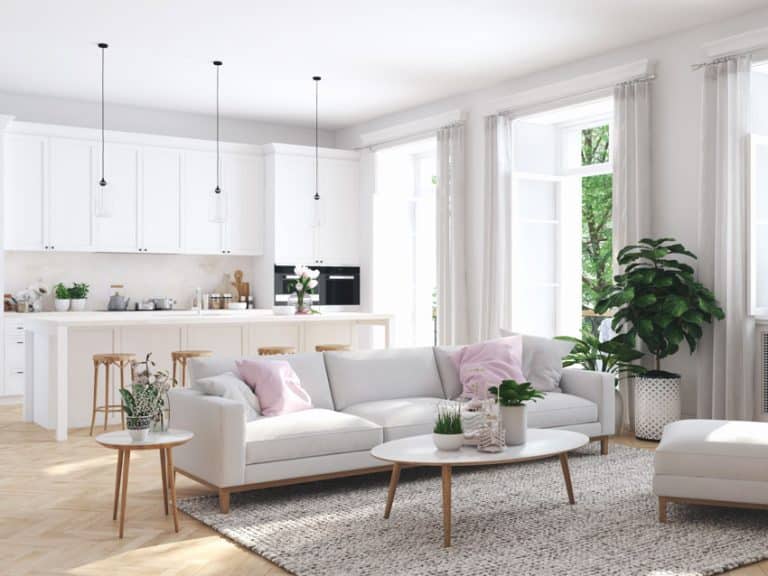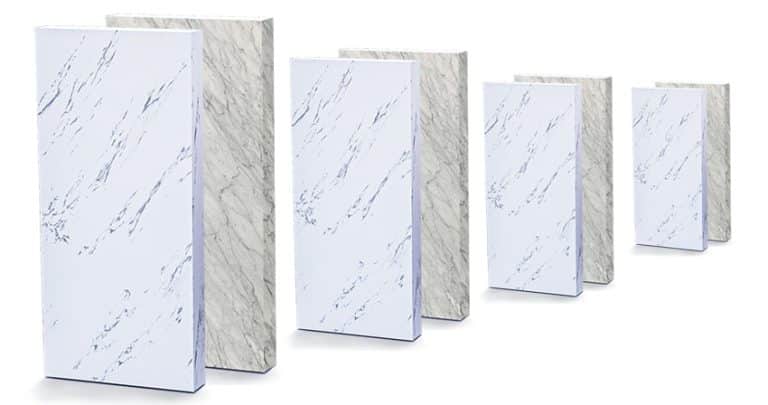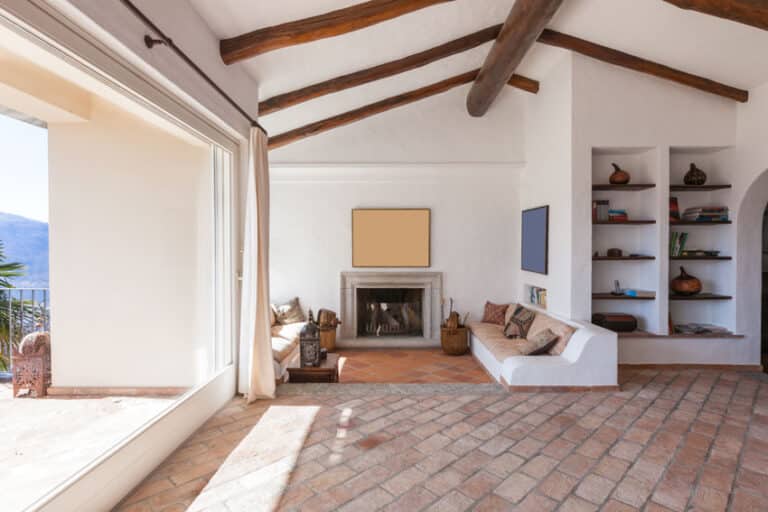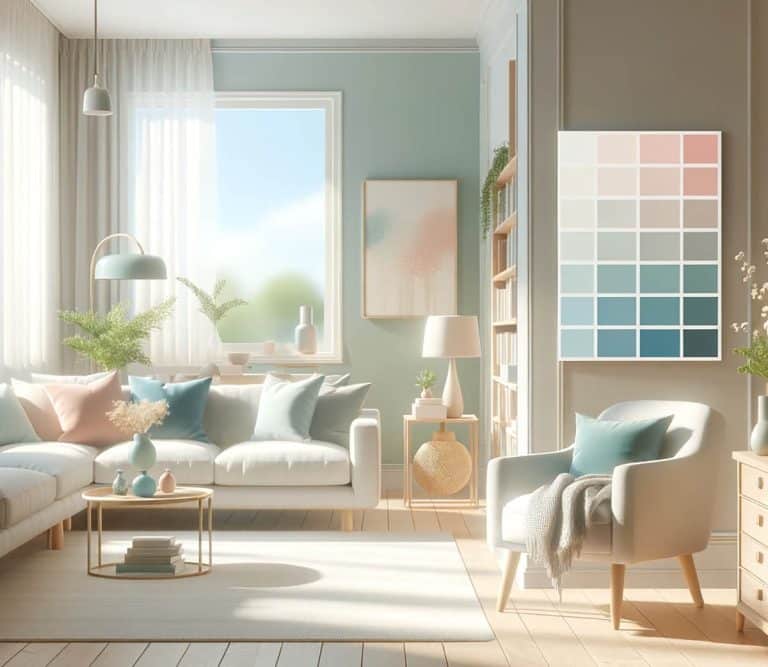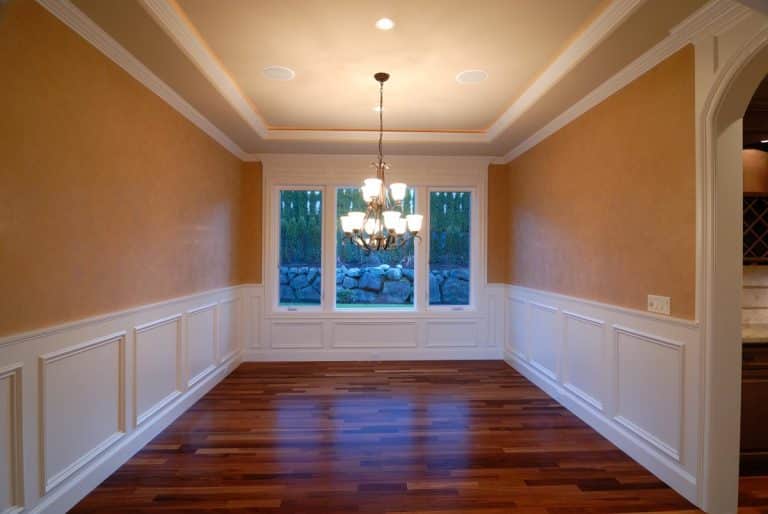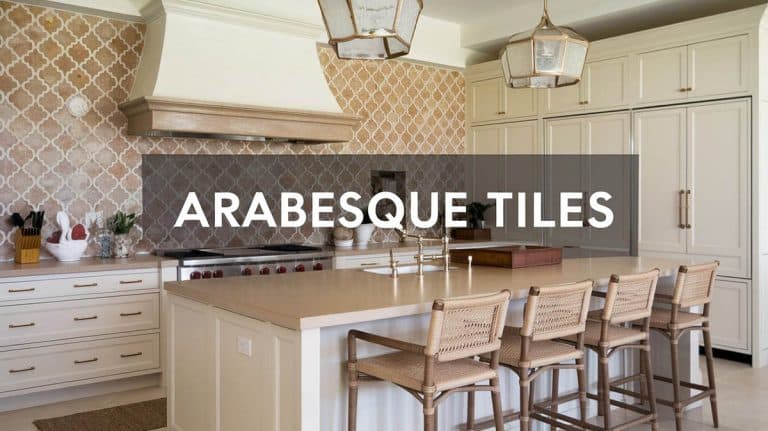The Advantages Of A Full Height Quartz Backsplash
One of the elements that you can add to your bathroom or kitchen is a full height quartz backsplash. There are a variety of ways you can install a backsplash, and having full height quartz is now becoming one of the favorites in designing.
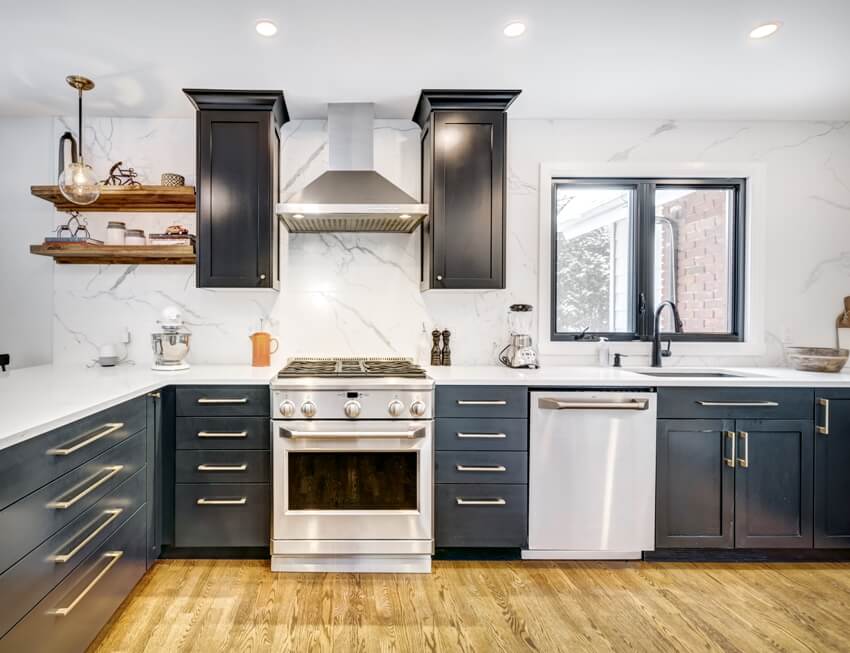
To understand it better, let’s start with the basics or what it is.
What Is Full Height Quartz Backsplash
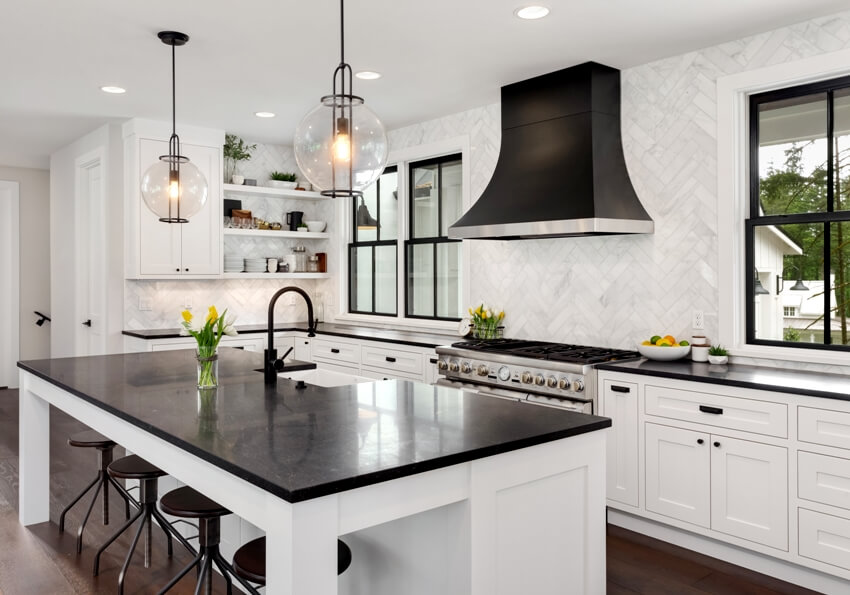
A backsplash is a kitchen or bathroom element that can be installed in order to protect walls from oil spatters and water splashes. It serves as a protection for your walls to minimize cleanup tasks and hopefully have them last longer. One example of this is a full height quartz backsplash.
Full-height backsplashes are wall protection that stretches from the countertop all the way to the ceiling (or the bottom of the top cabinets, if available).
Usually, the full-height backsplashes start 4 inches above the countertops. The height and how you install it are personal preferences, designs, colors, and materials.
Some of the materials used for a full height backsplashes include the following:
- Tile – a popular classy option with a variety of options (e.g. subway tiles and mosaic tiles)
- Marble – a popular option but preferred for bathrooms
- Granite – attractive and durable, and easy to maintain, too, making it a good option
- Quartz – an engineered stone that’s very popular as a wall cladding (man-made to look like a natural stone)
When talking about full height quartz splashback, it simply refers to a wall accent made from quartz and installed on the wall, starting from the top of the countertop to the ceiling or the bottom of the cabinet (if there is one installed).
It is a good material for backsplashes, especially since it’s non-porous, and it means that even with oil spills and splashes, they wouldn’t stain.
It’s easy to clean and maintain, so you won’t have to spend too much time and effort on its maintenance. Stay away from fire, though, since burn marks can appear in a full height quartz splashback.
Quartz Wall Backsplash Design Pros And Cons
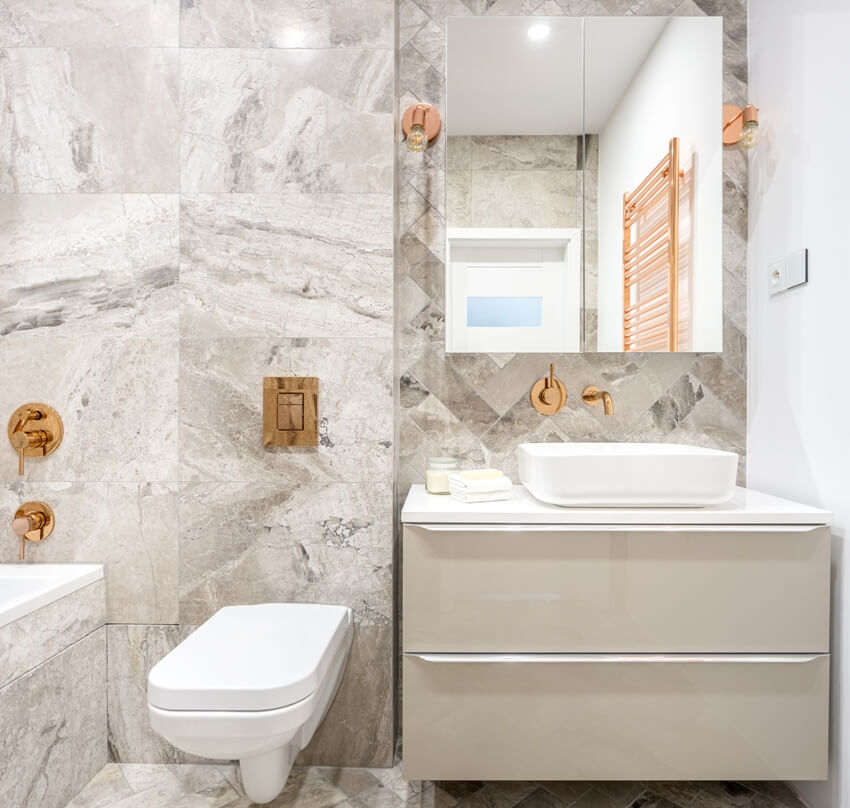
Now, if you are thinking about installing a full height backsplash at home, make sure you know the pros and cons of doing so. This will help you weigh the benefits you can get and the probable downside you might experience.
Pros
Here are the benefits of installing a full height backsplash in your kitchen or bathroom.
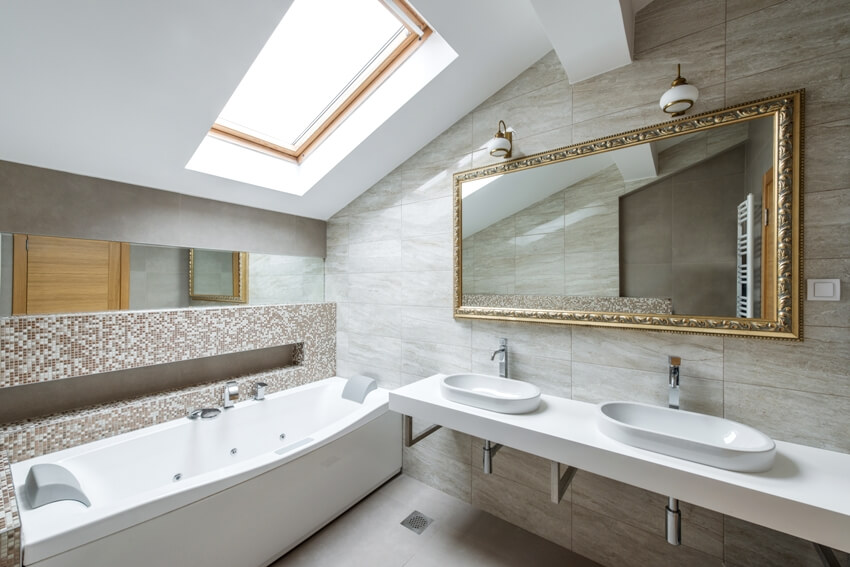
Protects Bathroom/Kitchen Walls – A backsplash’s main function is to protect the walls of your kitchen or bathroom from oil splatters and spills, as well as water sprays. And without the grease, water stains, steam, and other factors on the wall, it will last longer since damage will be prevented.
Saves Space while Being Functional – A full-height splashback saves space while protecting the walls. It is usually installed in areas where cabinets won’t obstruct it.
Low Maintenance Needed – They are easy to clean and maintain, primarily because it’s part of its functions.
Shows Visually Striking Aesthetics – You can add more aesthetics to your kitchen or bathroom through the full-height panel. It adds texture to the room’s design. Matching it with your countertops will definitely help. Choosing a slab panel is the current modern trend, but you can choose a different one.
Cons
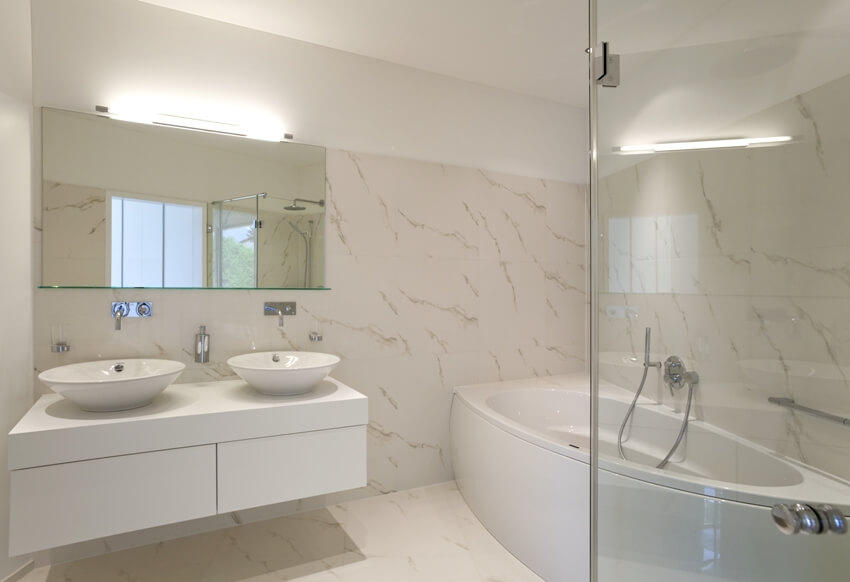
Meanwhile, here are the possible downsides of installing a full-height back panel.
Needs Ample Wall Space – Since a full height splashback extends up to the ceiling or the bottom of the cabinet (if available), you will need ample wall space for it to be great to look at while doing its function simultaneously.
Maybe Expensive for Large Bathrooms/Kitchens – For large floor plans, installing a full-height wall panel can be an expensive project. This is especially costly for those with high ceilings since it stretches all the way up to the ceiling.
Limited Design Flexibility – While quartz comes in many colors and patterns, you are committed to that specific style once its installed.
Weight – Having stone cladding on the wall is heavy, and you may need to ensure it has proper support for the additional weight and that it adheres securely.
Full Quartz Slab Backsplash in Kitchen
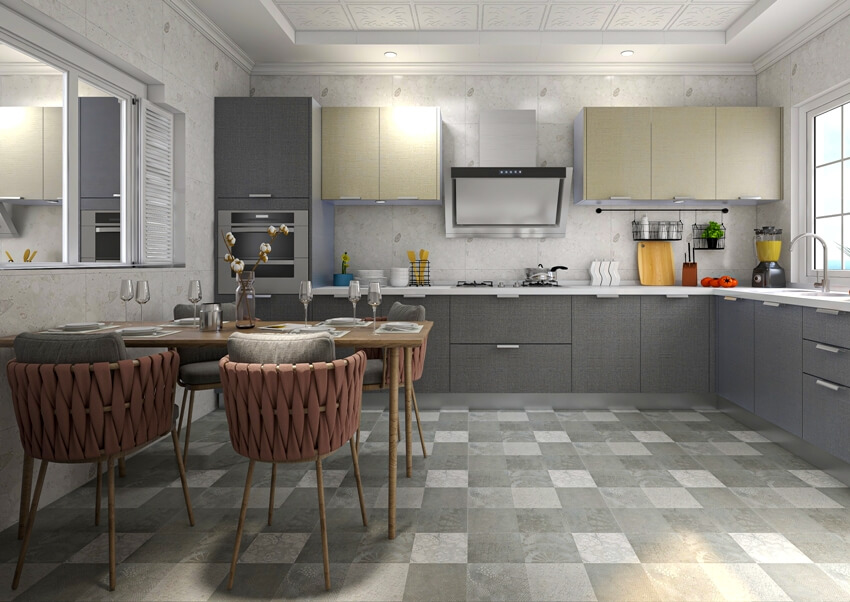
Besides your bathroom, the kitchen is another perfect place to install your floor-to-ceiling splash guard. It will keep your walls protected from oil spills and splatters while cooking. And it can either be the focal point of your kitchen’s design or add texture to it.
A floor-to-ceiling splash guard in the kitchen, whether slab or tile, provides elegance and sophistication. While this will depend on what countertops you match it with, this splash guard with maximum reach is a great option to add boldness and drama to a plain design.
Quartz Behind the Stove
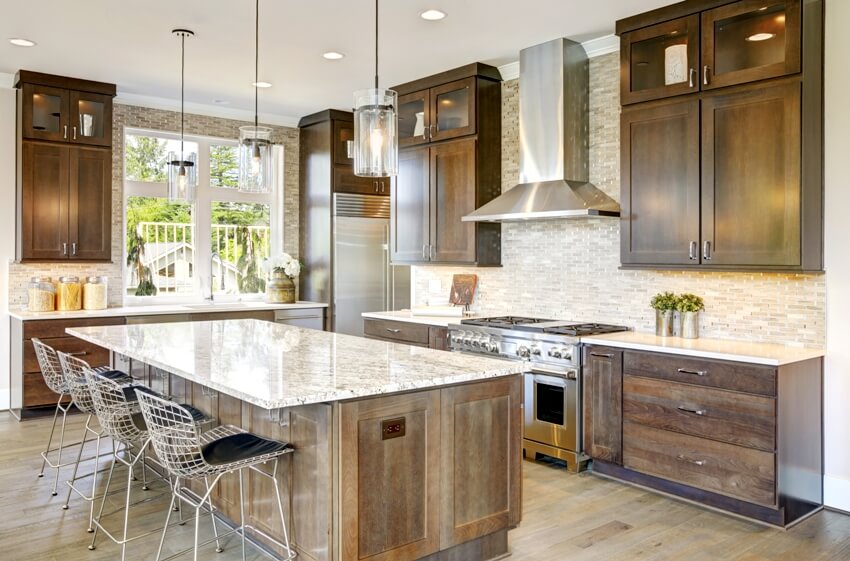
One of the ways you can install an engineered stone splashback with maximum reach is by positioning it behind the stove. It can help accent your range or high-end cooktop.
Quartz is a good idea behind the stove since it is a heat resistant material that’s durable and easy to clean. If you decide to install slabs, look for a bookmatched design so the stone veining patterns line up together for an impressive seamless look.
Since the kitchen is structured for cooking, installing the quartz backsplash aligned with the stove means it will take center stage and get a lot of attention. If you choose to install it this way, make sure to go for a design worthy of that attention.
Full Quartz Panel Backsplash in the Bathroom
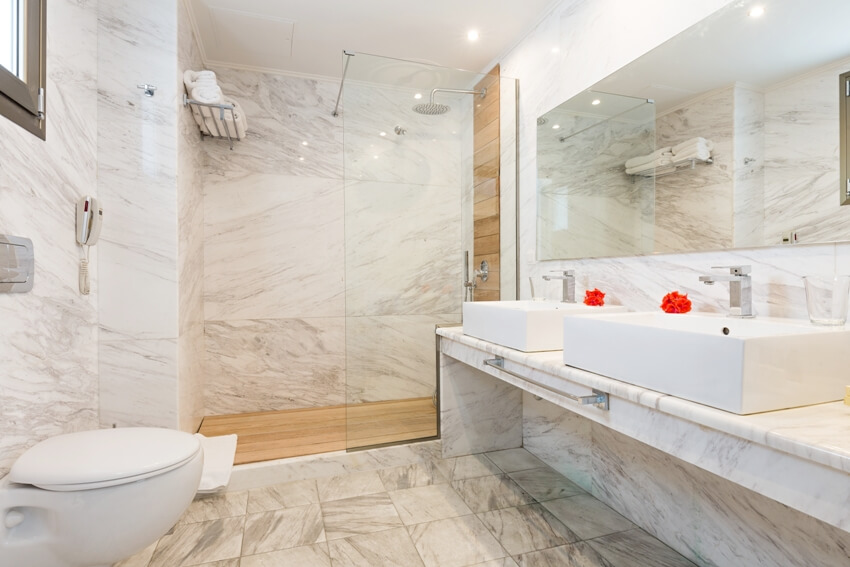
Installing a full-height splashback in your bathroom can help lessen damage to your walls and, at the same time, add personality and texture. But do you really need one in your bathroom?
Bathroom walls are prone to mildew and mold, which can damage the walls and force you to either treat them or replace your walls. A splashback can help avoid all that.
With a full-height splashback, you can make the most out of its function and aesthetic value. It is non-absorbent and non-porous, perfect for keeping mold and mildew away. Its aesthetics are also mesmerizing and flexible, and you can match it with different countertops. See our gallery of white quartz countertops here.
How Thick Should A Quartz Stone Backsplash Be?
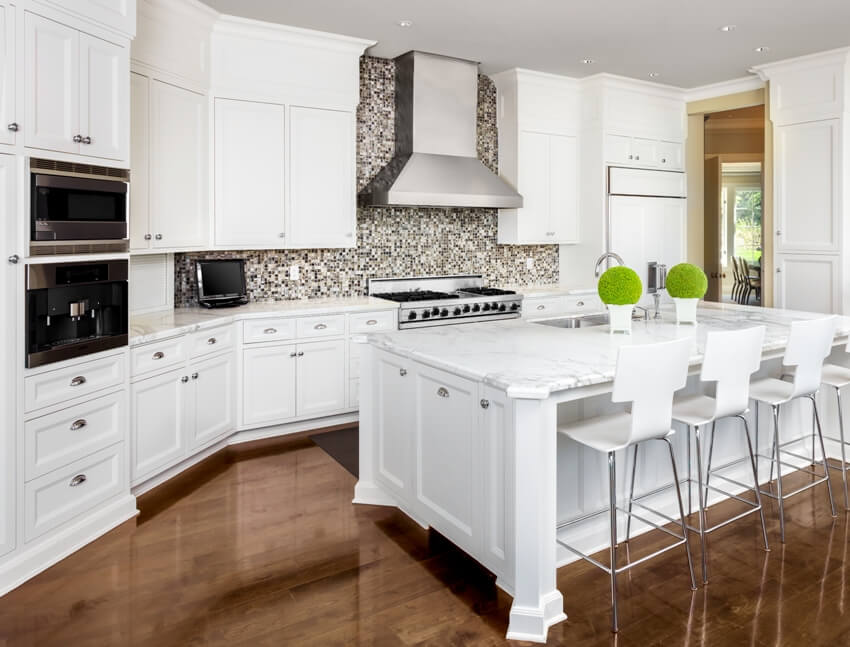
Quartz offers a durable surface perfect for a backsplash. But how thick should the backsplash be? Generally, backsplashes have between 3/32 to ¼ inch thickness. And this does not even have to consider what material it is made from (clay, glass, or even porcelain).
When it comes to quartz, you must consider whether you will use a tile or slab. Tiles have an average thickness between 3/16 to ¼ inches. Slabs, on the other hand, have an average thickness of ¼ inches or 3 centimeters.
This means that if you choose slabs instead of tiles, there is a higher chance that your backsplash will be thicker. So, decide first if you will use tiles or slabs.

